Menu
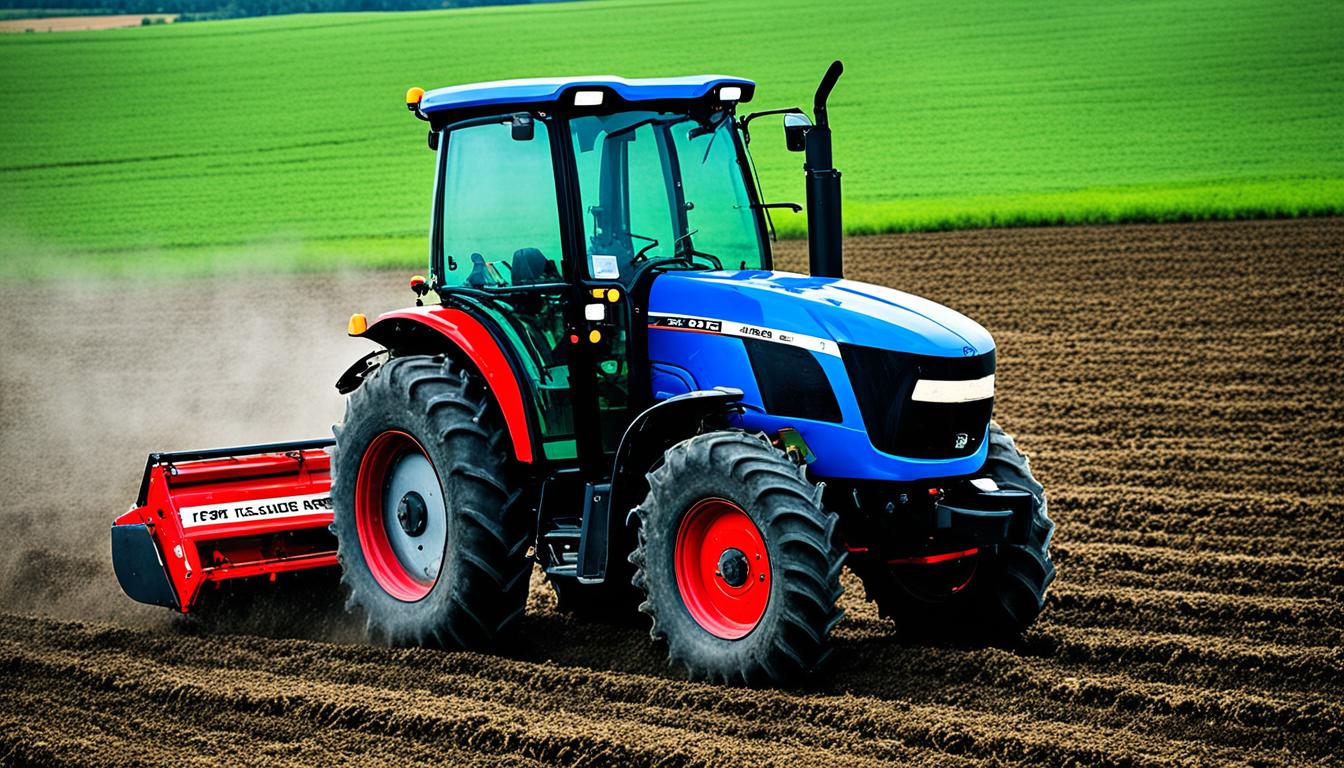
Between 2010 and 2018, Italy saw a large number of deaths from tractor roll-overs, reaching 74.7%. Shockingly, misuse of Foldable Rollover Protective Structures (FROPSs) contributed to 30% to 50% of these deaths. This shows how crucial it is to improve the design of farm machinery to save lives.
Agriculture plays a huge role in the global economy. It’s vital to keep making advances in the way farm tools are designed. Workers face many risks, like injuries that affect the muscles and bones or getting sick from toxic materials. New ergonomic technologies can help cut these dangers. They include smart systems, machines that work on their own, and tools made to be easier on the body.
Thanks to these new technologies, we see real changes. For instance, in grape farming, using smaller containers has made work less hard on the back. Also, using long hoes has increased efficiency when weeding, while keeping workers away from harmful pesticides.
Ergonomics helps reduce health risks in farming. Tasks like heavy lifting and awkward postures lead to muscle and joint problems. Sadly, farming ranks second in injuries and illnesses worldwide.
This makes it crucial for farms to use ergonomic machinery. This equipment is designed to be both effective and safe. It not only makes work easier but also helps in sustainable farming.
Farm workers face many physical challenges. They often deal with joint and muscle problems from their work. Things like carrying heavy loads, bending to pick crops, and repeating the same actions can be tough on their bodies.
Knee and hip problems from bending, backaches, and more are common. With so many injuries, it’s clear we need better tools and methods. Ergonomic solutions are key to making farm work safer.
Many farm injuries come from strains and back problems. Just in California, dealing with these issues costs a lot of money. Back pain in farming is still higher than other jobs. The goal is to lower these risks by using better equipment.
Ergonomic tools have made a big difference in cutting down injuries. For example, using smart farming tools like hoes that are easier to handle reduces strain. Workers don’t get as tired, and it’s less likely they’ll get hurt.
The use of special tools has even let some disabled workers go back to their jobs. This shows how big an impact ergonomic ideas can have. Making work easier and giving workers more regular breaks are key to a safer farm environment.
Innovations in farming make us rethink safety. By using smart tools and methods, we make the farm a better place to work. It’s all about looking out for our farm workers’ health and making farming better for everyone.
The farming sector always tackles big hurdles, especially with musculoskeletal disorders (MSDs) impacting many workers. These issues get worse with hard work like lifting heavy things, bending for long periods, and doing the same movements over and over.
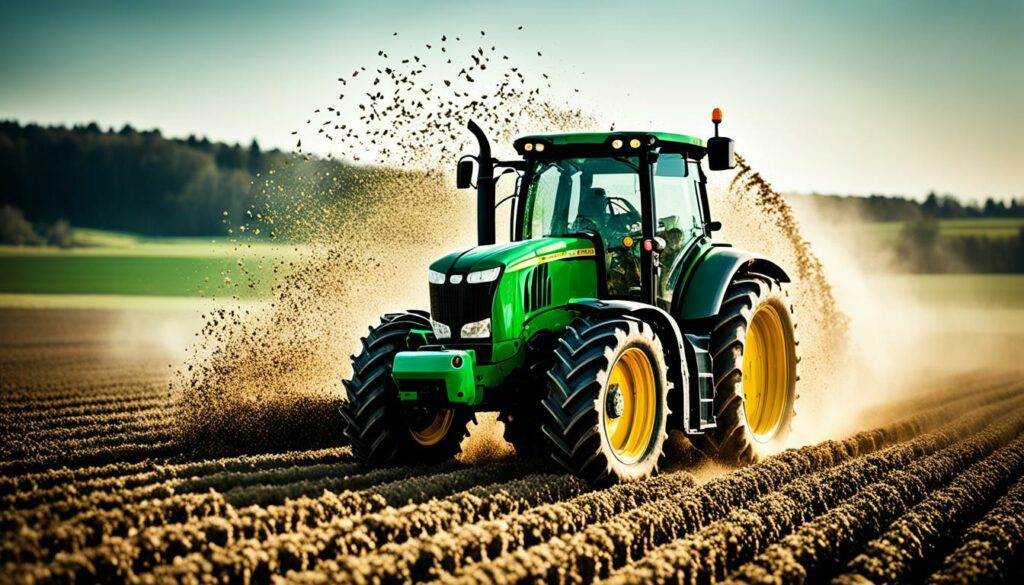
Agriculture stands as the second leading sector when it comes to injuries, deaths, and illnesses. For farm workers, musculoskeletal disorders are a big problem, often leading to low back pain. Conditions such as knee and hip osteoarthritis (OA) are also found frequently.
The kind of work that includes picking fruits, vegetables, and nuts, as well as weeding and pruning, can seriously hurt the hands, wrists, shoulders, and back. It’s important to find ways to make the work easier. Doing so can help the workers be healthier and do more work.
Working with vibrating machines like tractors can be tough on the body. It can lead to musculoskeletal issues. People feel these negative effects in their spine and joints.
In the long term, these issues might lead to back pain and changes in bone structure. It’s key to use technology and methods that reduce these vibrations. By doing this, we can make both manual and machine work in agriculture better for everyone.
“Notably, small ergonomic interventions have demonstrated considerable effectiveness in reducing MSDs among workers. Introducing tools like long-handled hoes for weeding and extended-handle carriers for potted plants significantly reduces stresses associated with manual operations.”
– Dr. James Smith, Occupational Health Expert
Every day, workers have to cope with the strain from their tasks and the damage from whole-body vibrations. To make work safer and healthier, we need to keep finding new ways to improve farming methods.
| Task | Common MSDs | WBV Effects |
|---|---|---|
| Fruit Harvesting | Hand, Wrist, Shoulder Pains | Spine and Joints Strain |
| Vegetable Picking | Low Back Pain | Degenerative Changes |
| Weeding | Neck, Arm, Shoulder Pains | Increased MSD Risks |
| Pruning | Wrist, Shoulder, Elbow Pains | Aggravated Conditions |
Farm machinery keeps getting better with ergonomic features. These are designed to make using farm equipment safer. Notably, better seats and handling tools have been a big help. They reduce health risks for those operating the machinery.
Manufacturers are improving seat designs to tackle whole-body vibrations (WBV). These seats aim to be comfortable but creating a one-size-fits-all standard is hard. Better tool handling also plays a big part in lowering the stress on workers from doing the same hard tasks over and over.
Enhanced seating is key in reducing health risks from long hours on machinery. It targets whole-body vibrations, which lessen the chance of muscle and bone problems. Because farming is a vital part of the global economy, using advanced machinery like this protects workers’ health.
Improving how tools are handled is just as important. It makes gripping and using the tools less physically taxing. This helps prevent Hand-Arm Vibration Syndrome and other health issues. The constant improvement in farming equipment is aimed at making farming safer and more efficient.
To wrap up, making farming tools more ergonomic is a big focus for the industry. It improves safety and health for those working in agriculture. These changes are vital for a safer, better working environment in farms worldwide. They also help the economy by keeping workers healthy and productive.
The use of automated systems in farming has taken a big step forward. It helps reduce the hard work for people and makes farm work more efficient. Robotics has changed things a lot. Now, machines can do things that were really tough for people before, like lifting very heavy things and doing jobs over and over. With the latest in robot technology, working on the farm is much easier for people.

Robotics plays a key role in farming today. It helps cut down the need for people to do hard work. Machines can plant, spray, and pick crops with much less effort from humans. This not only makes things safer for people but also speeds up how work gets done.
Field robots have special eyes and ears – a mix of 3D laser scanners, ultrasonic sensors, and cameras. They use these to see and avoid things in their way as they work. This makes work more precise and safer.
Automatic machines in farming are not just about less hard work. They make farming more efficient and safer too. These machines do their job really precisely, cutting down on waste and making it less likely for someone to get hurt. And they can work fast and all day long without getting tired.
A big deal for these machines is making them safe to use. Even though researchers are just starting to look into how risky these machines are, they use lots of sensors to keep everyone safe. These sensors can see and react to people or animals getting in the way. This helps create a safer working place.
There’s a lot of focus now on using advanced technology and robots in farming. Big companies like AGCO, Caterpillar, and CNH Industrial are leading this. They make sure farming gets more efficient and safer.
| Company | Initiative |
|---|---|
| CNH Industrial | Global smart factory initiative with AGVs and collaborative robots |
| Kubota Manufacturing of America Corp. | Use of 160 AGVs for material handling |
Minimising whole-body vibration (WBV) in tractors is crucial for farm workers’ health. It helps to reduce the risk of lower back issues. Several studies have shown how WBV affects health. They also say using new technology is important. Farming has a higher death rate than many other jobs, making this issue even more critical.
Manufacturers are working on two main things to reduce vibrations: active suspension and better cabin design. These adjust to make the tractor driver feel less vibration. This lowers the chance of muscle and bone problems. It also makes driving more comfortable and safer.
Active suspension systems are a key new technology for cutting WBV. Research has found they can make a big difference in tractors. These systems change how they work based on the vibration direction. But, we still need more studies to know if they really reduce muscle stress.
Making tractor cabins better is also important. New cabin designs can lessen the jolt felt through the seats. They are made to handle different types of vibrations well. The goal is to make farming a more comfortable and safer job. But, there’s still work to do in this area for the best solutions.
Keeping a good posture is vital for farm workers. New, ergonomic farm machinery is tackling this health challenge. The use of adjustable equipment and customisable agricultural tools means the tools fit each user’s ergonomic needs perfectly. This helps cut down on muscle and bone disorders.
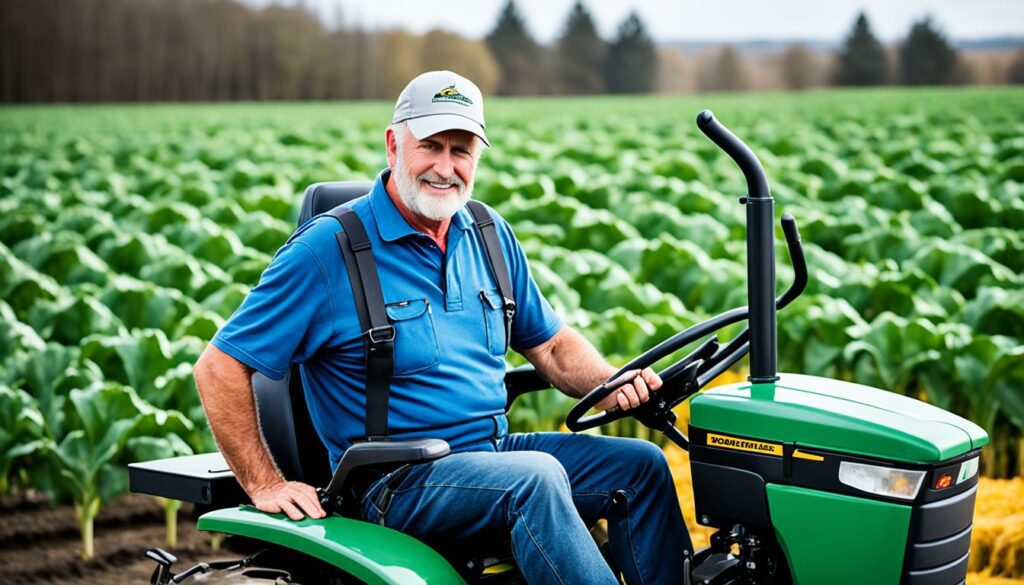
Today’s agricultural tools can adjust for height and angles. For example, Bosse tools will be available soon and have 16 locking positions. This adjustability lets workers customise their tools, reducing the strain on their bodies. It’s useful in avoiding injuries caused by repeating the same movements or working in odd positions.
Special ergonomic hand tools make work more comfortable and boost productivity. Tools like Stephen Walden’s ergonomic snow shovel and digging spade have been tested by ASU. They help lessen back and arm pains. By helping with tasks that often lead to wrist and shoulder pain, these tools are a step forward. They not only fix posture but also make the job easier and safer.
Ergonomic changes in farm tools have some interesting stats:
| Category | Data |
|---|---|
| Year (Publication) | 2015 |
| Volume | #BFS, Issue: #15, Page: #70 |
| Number of ergonomic shovels designed by Stephen Walden | 3 (ergonomic snow shovel, flat head shovel, and digging spade) |
| Number of different locking positions on Bosse tools | 16 |
| Distribution of Bosse tools | Early February |
| Price range of Bosse tools | Upper range of current shovels and spades on the market |
This leap in ergonomic farm machinery is about making work safer and more comfortable. Focusing on tools that adjust to every user has big benefits. It helps agricultural workers handle the physical demands of their jobs better.
More and more, the farming sector uses mechanised heavy lifting solutions. This change fights the tough physical work that farmers face. A big part of farm worker injuries involves muscle strains and back problems. So, these tech advances are really needed.
Power-assist gadgets have really helped cut down on the hard work of lifting. They support people in lifting and moving heavy things safely. In just one year in California, the costs of back injury claims hit over $22 million, showing how important these devices are.
Power-assist devices make farming tasks easier and safer. They help workers handle tasks with less effort. This makes a big difference for worker wellbeing and how much work they can get done.
Automated systems are a big deal in farming now too. They automate moving and placing heavy items. This cuts down on the hard lifting work for people. It also fights against common work injuries that can lead to disability.
By using these modern tools, we make life easier and safer for workers. These technologically advanced products help workers keep a good posture. They also make tasks less strenuous. Companies like INDEVA® lead in making these tools, which are faster and more precise than the old ones.
Improving safety in farming gear is vital, especially with many deaths in roll-over accidents. In Italy, between 2010-2018, 74.7% of deaths with tractors in the field were due to roll-overs. These figures show the urgent need for better safety tech on farm tools.
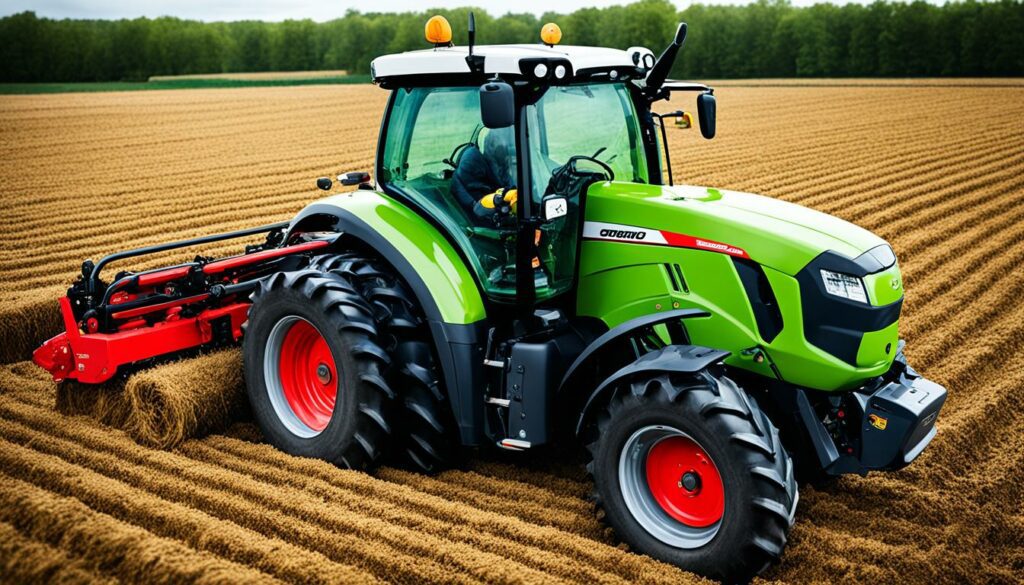
Roll-over protective structures (ROPS) are key for safer farming. Foldable ROPS (FROPS) can be awkward, leading to misuse and more deaths in accidents. About 30% to 50% of fatal tractor accidents are because FROPS weren’t used right. A new kind of ROPS, called the Ejectable in Two Dimensions ROPS (E2D-ROPS), fights this problem. It pops up by itself during a roll-over to protect the farmer.
CROPS, a new safety design, reduces the misuse risk of FROPS. But, it has issues with technical and legal rules in some places. Making FROPS more comfortable and easy to use could also help. This would stop the wrong use that can happen due to discomfort.
Partial assistance systems (PAS) are another big step in making farming safer. They make lifting and lowering the ROPS easier, so they’re used correctly. People who make ROPS say more farmers are buying ones that have these features, to add to their old tractors.
There’s also work on safety for roll-overs sideways. A new safety tool stops the tractor from rolling over and over. This stops farmers from getting badly hurt in these accidents. It shows that making farming safer is a constant goal for machine makers.
Ergonomic advances in crop harvesting gear help ease the physical stress on farm workers. They mainly focus on adding comfortable handles and grips. They also use tools powered by air to lessen the effort needed. These changes aim to lower the pressure put on the workers’ bodies.
Designing tools with easy-to-hold handles and grips is key. This helps reduce pressure on the hands, wrists, and shoulders. Many farm workers suffer from backaches, as well as shoulder, arm, and hand pain. Updating tools can offer big help.
Tools made to fit better also help people work in safer positions. This cuts the risk of them getting work-related health problems. They also stop injuries from doing the same movements over and over or using too much force.
Pneumatic tools are a game-changer in farming ergonomics. They work using air pressure, so they need less effort to use than normal hand tools. This is great for those with some disabilities or healing from too much work.
These air-powered tools let such workers get back to work without getting hurt more. They also help businesses save money on paying for back injuries. In California alone, these injuries cost about $22 million a year, with over 3,000 cases.
By using ergonomic tools and equipment, farmers can feel less strain and be more productive. This means less injury and better work output for those in agriculture.
The blend of ergonomic principles with sustainable farming tech joins worker health with eco-friendliness. Agriculture often leads in work injuries, showing the urgency for ergonomic solutions. It aims to protect workers and the environment.
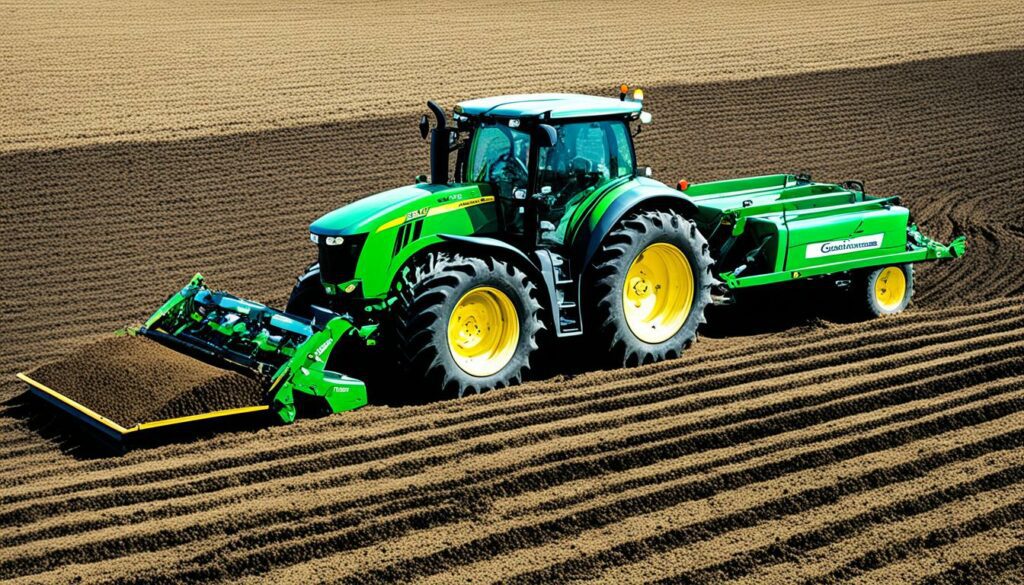
Ergonomic long-handled tools are key in lessening musculoskeletal disorders among farmworkers. They help with the common issue of low back pain. These tools mean less bending and stooping, lowering the risk of conditions like knee and hip osteoarthritis. This is a common problem among farmworkers.
Another benefit is reduced chemical exposure for farmworkers. Pesticides and agrochemicals can lead to many health issues. By using ergonomic tools, farmers face fewer hazardous chemicals. This move supports both worker health and the environment.
Tackling physical strain, ergonomic tools improve work conditions. For example, powered cutters can help those with disabilities get back to work. Having breaks during hard tasks offers some relief. These changes show how farming can be both sustainable and supportive.
Ergonomic innovations play a big part in fighting work-related health problems. They help with grape harvesting by using smaller tubs and by adjusting the size of orchard ladders. These changes lessen pain, making work healthier and more efficient.
Pneumatic systems are changing how farming tasks are done. These systems use compressed air. They power tools, making jobs like cutting easier.
Pneumatic systems help cut down on hard, manual work. This is important because tough jobs can hurt the body. They can cause problems with muscles and bones. Many injuries on farms could be lessened with the right tools. These injuries lead to missed work and high costs. Studies show that using the right tools can lower these costs by 93%.
Pneumatic tools make farm work faster. They are powerful and easy to use. Improvements in how tools are designed can double how much work gets done. For example, a factory that makes metal parts saw big benefits. They made $1,910,000 more in ten years with new tools. They spent $495,500 to get those tools. This shows the big gains similar spending can bring in farming. It helps both the workers and the farm.
Relatively simple changes in ergonomics can make a significant difference in preventing injuries in farm work.
Using pneumatic tools helps farmers in many ways. It eases hard work and makes things faster. This makes farming better for everyone involved.
| Benefit | Impact |
|---|---|
| Manual Strain Reduction | Significantly decreases WMSDs and compensation costs |
| Efficiency Enhancement | Double productivity and increased annual returns |
| Worker Well-being | Improved comfort and reduced absenteeism |
Precision farming technologies are changing the face of agriculture. They make farming more efficient, accurate, and sustainable. These changes boost productivity and lower the strain on farmers. They do this by making work easier, which is good for their health.
Using GPS in agriculture has led to automated steering in tractors and machines. These systems help with accurate navigation and alignment. This means less manual work. It also lowers the chance of farmers getting hurt from doing the same movements over and over again.
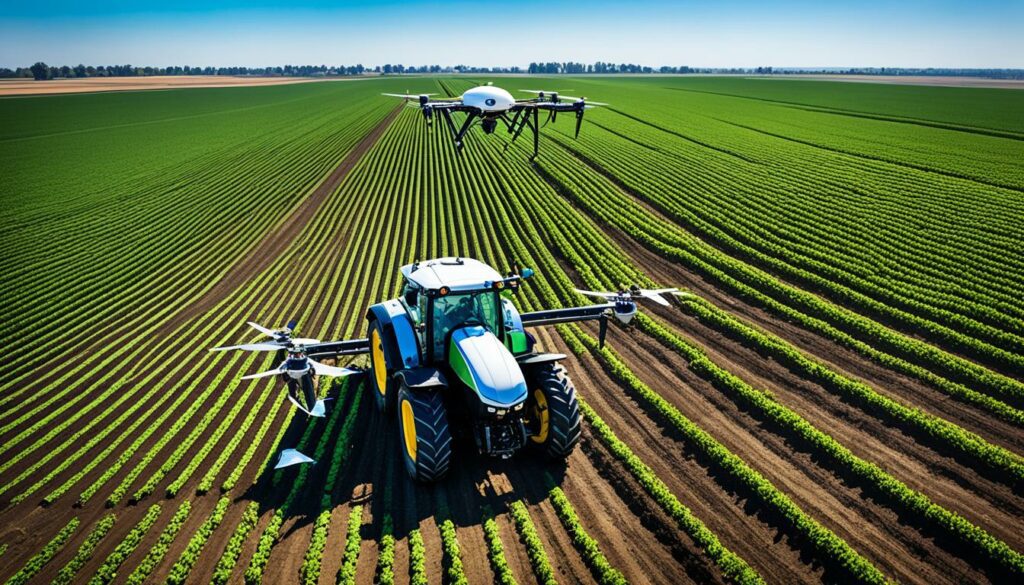
For seeding and planting, precision is key. GPS systems help farmers place seeds and plants perfectly. This leads to bigger crop yields and less wasted effort. Farmers need to make fewer manual changes, which makes their work safer and more effective.
| Year | Adoption Rate of VRT in North America | Usage of GPS Mapping Systems on Soybean and Corn Farms in the U.S. |
|---|---|---|
| 2017 | 15% | 50% |
| 2020 | – | – |
| 2025 (projected) | – | – |
The use of precision farming shows a modern farming approach. It helps make more money and reduces harm to the environment. It also keeps farm workers safe and healthy.
Being deeply into farming means knowing how important ergonomics is for nurseries and greenhouses. It helps keep workers healthy and work running smoothly. Better work areas and tools have made a big difference. They help workers feel more comfortable and do their jobs better.
To stop muscle and bone issues, we need optimised workstations for nursery and greenhouse staff. These workers often lift heavy things and work in strange positions. This can lead to back pain, a common issue in farming. By making work areas better, we can help workers stay healthy.
It’s all about giving them support and letting their bodies move naturally. The right design reduces the strain on their bodies. It also means tools are easier to reach, so there’s less need to bend or stretch too far.
Nursery workers need the best tools to look after plants without hurting themselves. Greenhouse toolkits have been improved to make life easier. They focus on reducing the tiredness and pain that can come from hard work. Just by changing how the tools are shaped and made, the workers have said they feel less pain. Tools with easy-to-grasp handles and that are not too heavy are key. They make work more comfortable and avoid bad postures.
Improving how work is done in nurseries and greenhouses is a win-win. It makes the place safer and people healthier. And it boosts how much work can be done.
The future of agricultural ergonomics is changing fast. It’s about to use a lot more advanced tech. This move is needed to tackle health issues in the field, especially joint and muscle pain.
Many farm workers get hurt often because of the tasks they do. These include lifting heavy loads and bending for long periods. The goal is to make their work less harmful to their bodies.
Artificial intelligence (AI) could change farming for the better. It can handle hard choices and make work easier for farm workers. This means tasks like weeding and picking fruit could be done more easily. Doing this helps avoid injuries and makes work safer and faster.
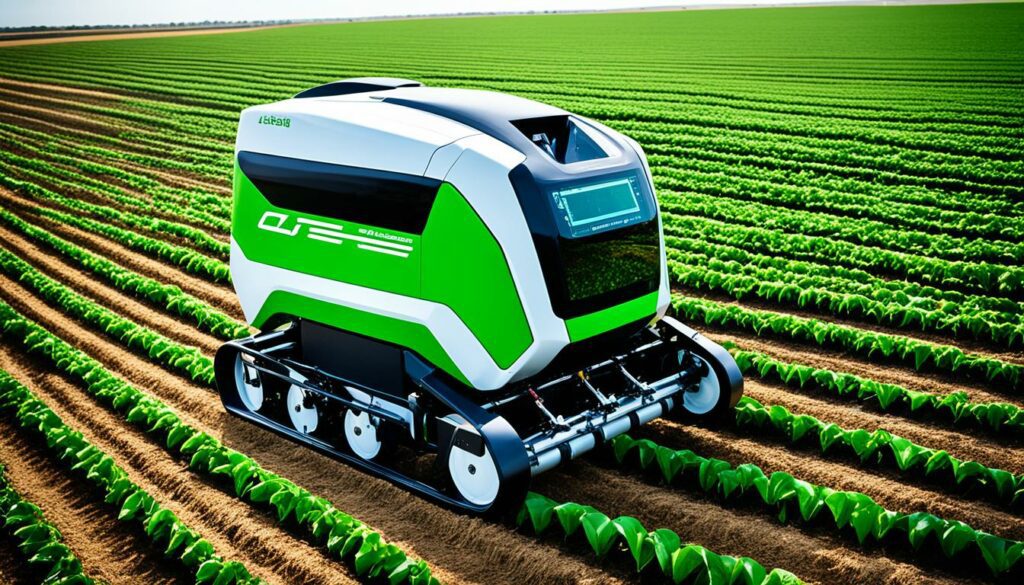
Wearable tech is also making its way into agriculture. These gadgets watch the farmers’ health as they work. They warn about working too hard to avoid injuries. Plus, they help farmers remember to take breaks. This way, it’s easier on the body in the long run.
This tech is all about making farming sustainable and keeping the farmers well. By adding AI and wearable tech, farm work will be safer. This helps build a stronger and healthier farm workforce for the future.
Agricultural work carries significant risks, making it the second-highest industry for injuries and illnesses. Musculoskeletal disorders (MSDs) are a top concern. Farmworkers often face back, wrist, and shoulder pains. It’s crucial to understand these dangers to encourage the development of safer farm equipment.
Ergonomic farm machinery innovations show great promise in solving these problems. For example, using smaller tubs for grape harvests and long-handled hoes has reduced pain. Tools like pneumatic cutters allow workers with disabilities to keep working efficiently. These advancements are more than just helpful; they’re vital for the health and success of agricultural workers.
Moreover, precision agriculture brings hope for a future with fewer whole-body vibrations and risks. Advanced tractor seats with suspension systems aim to make tractor operators more comfortable and reduce injuries. Though these efforts are still being tested, the goal is clear: improving tractor comfort and health with sustainable, ergonomic solutions. By focusing on advanced farm equipment and precision technologies, we’re building a safer future for agriculture and its workers. The future of farming will rely on these ergonomic solutions to protect its workforce, the backbone of our food supply.
Agricultural work comes with health risks like MSDs (musculoskeletal disorders). These include low back pain. Workers also face dangers from harmful substances and vibrations. Tasks like heavy lifting and repeated movements can make these risks worse.
Ergonomic solutions make farm work easier and safer. They cut down physical strain and the chances of MSDs. Workers also face fewer dangers from harmful substances and vibrations. New tool designs and adjustable equipment make work more comfortable and efficient.
Workers deal with a lot of musculoskeletal disorders because their tasks are so tough and repetitive. They also face risks from whole-body vibration (WBV). This comes from working with big machines like tractors.
New seats in farm machinery aim to make dealing with WBV better. They’re designed to keep the body comfortable and lessen the strain. This is especially true for the lower back and neck.
Handling tools in a better way means less strain from doing tasks over and over. Ergonomic hand tools and tools powered by air are great examples. They make workers healthier and more productive.
Robots in farming cut down on tasks that involve lots of repeating and heavy lifting. This helps workers stress less. It also boosts how efficient and safe the work is.
Active suspension in tractors helps manage all the different vibrations workers feel. It lessens the strain on muscles and joints, especially in the lower back and neck.
Equipment that can be adjusted means workers don’t have to bend or lift a lot. This cuts dangers from bad positions, doing the same things too much, and heavy lifting. It makes for a comfier work life with fewer injuries.
Machines like power-assist devices and systems that handle things automatically make lifting less of a problem. Not having to lift things by hand as much means fewer injuries and better work results.
ROPS keep tractor operators safe if the tractor turns over. PAS make it easier to use ROPS. This helps workers use them properly and be safer at work.
Tools for picking crops have been made to be nicer on the hands, wrists, and shoulders. This includes handles and grips that fit better. Tools powered by air help workers who might have trouble with other tools keep working.
Sustainable farming includes tools with long handles to stop workers from bending or stooping too much. This makes the work less hard on the body. It also helps reduce how much workers are exposed to chemicals, making things safer.
Pneumatic systems use air to power tools, which makes work easier and more efficient. They cut down on the injuries caused by over using muscles and make work better overall.
GPS and steering systems that work on their own have made planting and seeding crops more accurate and faster. This means less work for people to do by hand, which helps stop injuries and tiredness.
Nurseries and greenhouses have better work areas and tools that are designed for looking after plants in an easy way. This means workers are less tired and can get more done.
In the future, farm work will see more AI to help with tricky choices and make everything run better. Wearable tech will also be used to check how healthy workers are in real time. These changes will help make work less tiring and stressful.